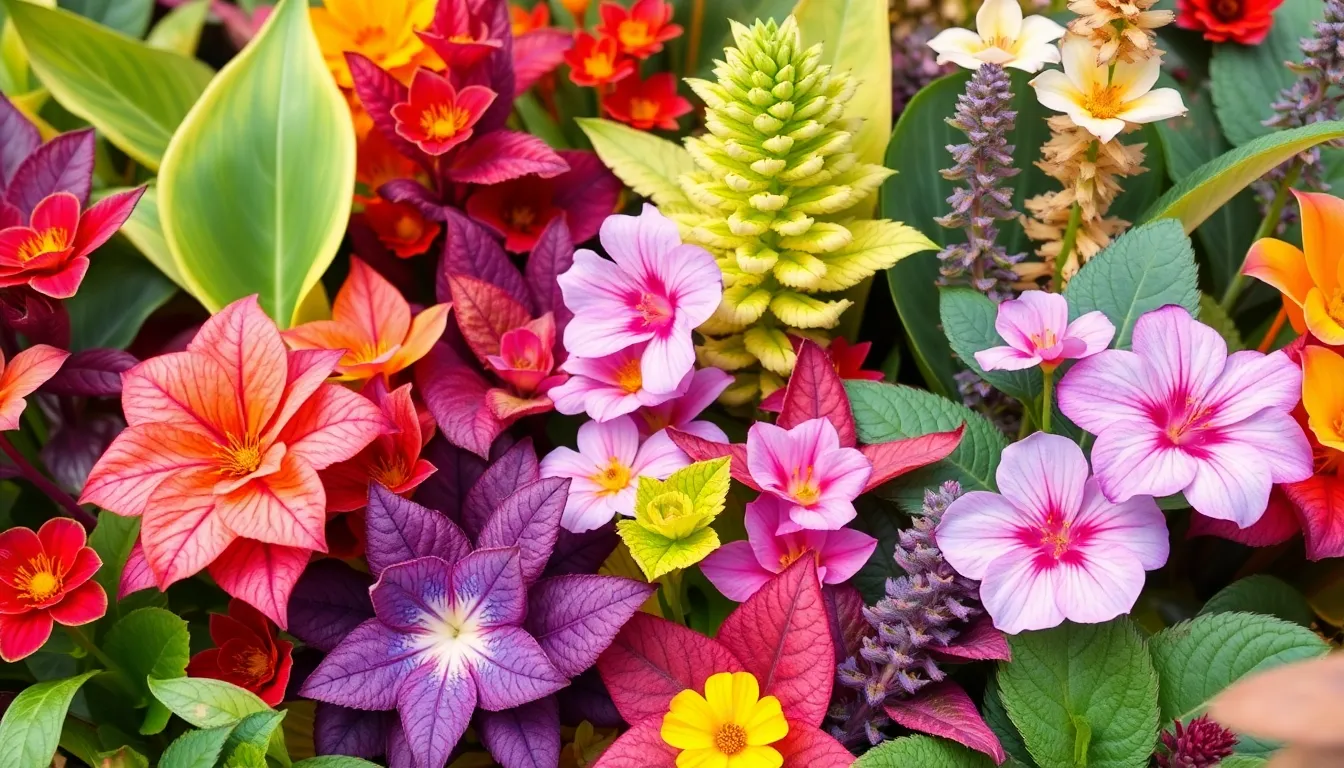The Best Fluffy Pancakes recipe you will fall in love with. Full of tips and tricks to help you make the best pancakes.

Botany Book: Unlocking Nature’s Secrets for a Greener Future
Plants are the unsung heroes of our planet. They silently work their magic, providing oxygen, food, and beauty, yet most people barely give them a second glance. Enter the world of botany—a fascinating realm where every leaf, petal, and root has a story to tell. A good botany book doesn’t just educate; it transforms the way we see the green around us.
Botany Book
A botany book serves as a comprehensive resource for understanding plant life. These texts cover various aspects, including plant physiology, taxonomy, and ecology. Each book delves into how plants interact with their environment and the vital roles they play in sustaining ecosystems.
Typically, botany books aim to enlighten both students and enthusiasts about botanical science. Some books focus on practical applications, like gardening techniques or horticulture practices. Others emphasize research findings and advanced topics, catering to professionals in the field.
Illustrations and photographs often accompany narratives in botany books. Such visual aids enhance comprehension, making complex concepts more accessible. Diagrams frequently clarify plant structures and processes, supporting visual learners effectively.
Readers may encounter specific types of botany books: field guides, textbooks, and reference books. Field guides concentrate on plant identification in specific regions, providing essential information on local flora. Textbooks present foundational knowledge, making them ideal for academic settings. Reference books serve as invaluable tools for researchers seeking detailed information on specific plant species.
With engaging narratives and scientific rigor, botany books foster a greater appreciation for plants. These resources encourage exploration of the natural world, empowering readers to connect deeply with their surroundings. Understanding plants is not just academic; it complements lifestyle choices, such as sustainable living and environmental conservation.
Key Topics Covered in Botany Books

Botany books delve into various essential topics that enhance understanding of plant life. They explore diverse aspects such as anatomy, physiology, and taxonomy.
Plant Anatomy
Plant anatomy involves the study of internal structures in plants. This field encompasses various components like roots, stems, leaves, and flowers. Readers learn how these elements function and interact to support plant growth. Focused examinations of tissues, such as xylem and phloem, reveal their roles in transportation and support. Understanding plant anatomy not only aids in identification but also enhances comprehension of plant health and characteristics across different species.
Plant Physiology
Plant physiology examines vital processes that sustain plant life. Photosynthesis serves as a key topic, detailing how plants convert sunlight into energy. Respiration and transpiration also get significant attention, illustrating how plants exchange gases and manage water. Insights into nutrient uptake highlight the importance of soil health and environmental factors. Readers gain practical knowledge that applies to gardening, agriculture, and conservation while connecting these physiological processes to the overall health of ecosystems.
Plant Taxonomy
Plant taxonomy classifies and organizes plant species based on shared characteristics. This discipline provides a systematic approach to naming and grouping plants, ensuring clarity and precision. Families, genera, and species levels help identify relationships among different plants. Botany books often feature taxonomic keys, aiding in accurate identification during fieldwork. Comprehensive understanding of taxonomy fosters appreciation for biodiversity while aiding conservation efforts by highlighting endangered species and habitats.
Recommended Botany Books for Beginners
For those interested in exploring botany, several essential texts provide foundational knowledge and insights into plant life.
Classic Texts
“Botany: An Introduction to Plant Biology” by James D. Mauseth stands out as a vital resource. This book offers a comprehensive overview of plant biology, making complex information digestible for beginners. “The Plant Book” by David H. McShea serves as another excellent reference, featuring over 2,000 species of plants and detailed illustrations. Its focus on plant identification enhances practical knowledge. “Flora of North America” offers an extensive examination of North American plants, acting as a crucial guide for enthusiasts looking to understand local biodiversity.
Modern Publications
“Planting the Future: Saving Our Vegetation Heritage” by Christine M. S. Hoon offers a contemporary perspective on plant conservation efforts. This book highlights innovative approaches combining traditional botany with modern techniques to preserve endangered species. “The Hidden Life of Trees” by Peter Wohlleben explores the intricate relationships among trees within ecosystems, proving captivating for those curious about forest dynamics. “Botany for Gardeners” by Brian Capon focuses on practical applications, empowering novice gardeners with essential botanical principles. Collectively, these modern publications expand understanding and appreciation for plant life.
The Importance of Botany in Today’s World
Botany plays a vital role in addressing many contemporary challenges. Understanding plant life contributes directly to food security and sustainable farming practices. Agricultural advancements, driven by botanical research, lead to higher crop yields and disease-resistant varieties.
Recognizing the importance of plants in combating climate change is essential. Plants absorb carbon dioxide while releasing oxygen, which benefits the atmosphere. Preservation of diverse plant species enhances ecosystem stability, crucial for maintaining biodiversity.
The study of botany supports medicinal breakthroughs. Numerous pharmaceuticals derive from plant compounds, showcasing plants’ roles in healthcare. Knowledge of plant biology enables researchers to discover new treatments and enhance existing therapies.
Botanical education fosters environmental awareness. Comprehensive resources educate individuals about ecosystems and their functions, promoting conservation efforts. Awareness of ecological systems encourages communities to participate in sustainable practices, including urban gardening and reforestation.
Botany influences aesthetic and recreational aspects of life as well. Landscaping and gardening are significant for emotional well-being and community bonding. Diverse plant selections enhance public spaces, improve air quality, and create habitats for various species.
Integrating botany into daily life leads to more informed choices. Awareness of local flora encourages sustainable product selection and responsible gardening. Botany books act as valuable resources, providing reliable information on plant species and ecosystems.
Exploring the intricacies of plant life cultivates a sense of connection to nature. This connection nurtures a mindset focused on preservation and stewardship of the environment. Engaging with botany creates opportunities for personal growth and community development in harmony with the natural world.
Conclusion
Botany books are invaluable resources that deepen one’s understanding of the plant kingdom. They not only provide essential knowledge about plant structures and functions but also highlight the importance of plants in our ecosystems. By exploring various topics from plant physiology to taxonomy, these texts foster a greater appreciation for the natural world.
Engaging with botany can inspire individuals to make sustainable choices and cultivate a connection with their environment. Whether for academic purposes or personal interest, a well-chosen botany book can transform one’s perspective on plants and their vital roles in our lives. Embracing this knowledge paves the way for a more environmentally conscious future.
